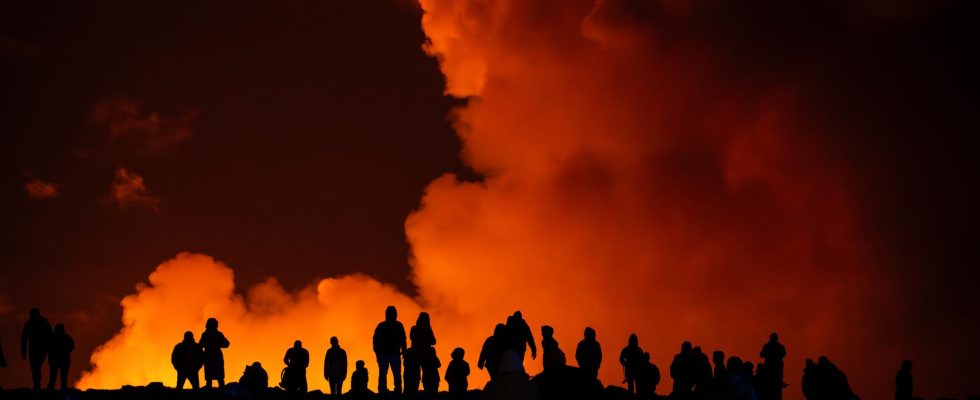unsaveSave
expand-left
full screenIceland has been hit by a new volcanic eruption between the heights of Hagafell and Stóri-Skógfell. Photo: Marco Di Marco/AP/TT
The lava is still flowing powerfully from the largest volcanic eruption to hit Iceland recently.
It threatens an important power line and the risk is also that toxic gas will spread from the lava, according to seismologist Björn Lund.
The lava flow from the eruption that began on Saturday evening has slowed somewhat during the night, according to Björn Lund, seismologist at Uppsala University.
– But there is still a fairly strong flow both west and south, he says.
The biggest problem now is that the lava is approaching a line from the geothermal power plant in Svartsengi. It has recently been repaired after breaking during a previous eruption, and if it happens again it will have a big impact, according to Lund.
– The power plant supplies the entire outer part of the Reykjanes peninsula with district heating and hot water. Electricity production can also be affected, but hot water is the most critical, says Björn Lund.
Reached Grindavík
During the night, the lava has also reached the protective dikes built around the coastal town of Grindavík.
– The dikes seem to be holding up so far, they have been reinforced so that the lava will flow down towards the sea, says Lund.
When the lava flows into the water, it leads to explosive events, he says.
– The lava is torn apart and you get ash development. Unpleasant gases can also form, so you should definitely not stay nearby.
The residents of Grindavík have been evacuated, as have 700 people from the Blue Lagoon tourist attraction.
Toxic sulfur dioxide
Another concern is that toxic sulfur dioxide is released from the lava and can be spread by the wind to nearby communities.
– Everything depends on how the wind blows and how high concentrations are released, says Lund.
He believes that the outbreak will pass already today or tomorrow. On the other hand, the processes in the earth’s crust, where the reservoirs of magma are replenished continuously, learn to continue. And that likely leads to more outbreaks.
– It is highly unclear how long this situation with regular outbreaks will last.
